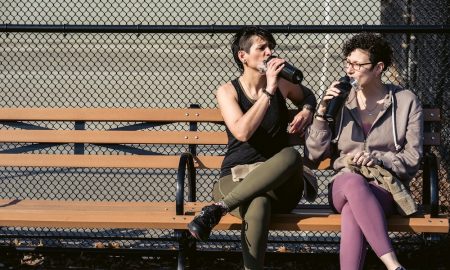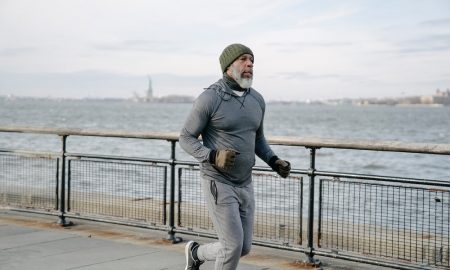
Combining Strength Training and Cardio May Help You Live Longer

Ever wondered what concoction of exercises could unlock the doors to a longer, livelier life? Recent revelations from studies in the British Journal of Sports Medicine hint at a captivating fusion—melding strength training with cardio might just be the elixir to a more robust, healthier tomorrow.
Unveiling the Revelations
These studies unravel a compelling narrative. They suggest that intertwining muscle-strengthening endeavors with aerobic pursuits might hold the key to a longer, richer life. Surprisingly, this dynamic duo shows a notable reduction in the risk of mortality from all causes (except cancer) compared to indulging in either solo.
In essence, the symphony between these two exercise forms could script a transformation in your overall well-being, painting a vibrant panorama of health and vitality.

Jonathan Borba/ Pexels | Choose exercises you love and push your limits
The Power of Data
The first study, conducted by researchers from the National Cancer Institute, analyzed data from the Prostate, Lung, Colorectal, and Ovarian Cancer Screening Trial, spanning from 1993 to 2016.
Surveys revealed that individuals who combined cardio and muscle strengthening exercises were 41% less likely to succumb to any cause during the trial, except cancer, in comparison to those who remained sedentary. Those who engaged in aerobic activity alone reduced their risk by 32%, while weightlifting alone led to a 9% risk reduction.
The Ageless Impact
Notably, these benefits weren’t exclusive to a particular age group. The study’s average participant age was 71, demonstrating that individuals of varying ages can reap the rewards of this dynamic duo. Additionally, the benefits were observed across different races, ethnicities, and smoking statuses, although gender did play a role, with women deriving greater benefits.

Mikhail Nilov/ Pexels | Aging is inevitable, but how you age is not.
A Second Voice of Support
A second study, published in the BJSM in August, reinforced these results. Brigham Young University researchers examined data from over 416,000 American adults between 1997 and 2014, revealing that just an hour of exercise per week substantially reduced mortality risk.
This benefit increased up to about three hours of weekly exercise, with diminishing returns beyond this threshold. Regardless of age or gender, engaging in three hours of aerobic exercise and two strength training sessions per week led to a remarkable 30% reduction in all-cause mortality.
Alignment With Recommendations
These studies resonate harmoniously with established federal exercise directives. The U.S. Department of Health & Human Services echoes a similar tune, advocating for a weekly dose of 150 minutes in the realm of moderate-intensity aerobic activity or 75 minutes steeped in vigorous intensity.
Additionally, they underscore the importance of infusing muscle-strengthening endeavors into the routine—twice a week, targeting key muscle groups. Whether it’s the resistance bands’ tango, the weighty conversation with dumbbells, or harnessing the body’s own weight as a workout tool, these activities foster strength and resilience.
Unraveling the Magic Behind the Numbers

samer daboul/ Pexels | The magic happens when you combine the strength of your will with the endurance of your commitment
But what’s the magic behind this powerful combination of strength training and cardio? While the exact mechanisms remain a mystery, experts believe it sets a cascade of positive effects in motion. Aerobic activity promotes weight loss and positively impacts various conditions, including high blood pressure, diabetes, liver disease, joint problems, high cholesterol, sleep apnea, and acid reflux.
It enhances blood flow and oxygen levels, improving insulin resistance and reducing “bad” LDL cholesterol, ultimately mitigating the risks associated with visceral fat.
Conversely, strength training builds muscle, contributing to better glucose metabolism. This insulin resistance decrease reduces risks of heart disease, type 2 diabetes, and other health issues. Additionally, individuals with more muscle mass and less fat tend to enjoy a lower mortality risk.
Mix It Up
While these studies didn’t delve into specific exercise forms, experts emphasize that the type of activity matters less than the act of moving itself. As Dr. Osborne suggests, “The most important thing is to move as much as you can, as many days a week as you can.
Find something that fits into your lifestyle and mix it up.” Everyday activities such as carrying groceries or opting for the stairs can be counted as strength-building and aerobic exercises, respectively. The key is to make exercise enjoyable and integrate it seamlessly into your daily routine.
More in Body
-
`
Swimming in Cold Water for Improved Health: How to Do It
As temperatures plummet and waters turn frigid, some individuals embrace the icy plunge for a revitalizing and thrilling experience—a cold-water swim...
November 14, 2023 -
`
Jennifer Aniston’s Four-Step Guide to Staying Fabulously Fit
Hollywood’s darling Jennifer Aniston has been enchanting audiences since her days on “Friends,” and she’s showing no signs of slowing down,...
November 7, 2023 -
`
Salma Hayek’s Secrets to Her Youthful Look Even in Her 50s
When you think of Hollywood heavyweights, it is hard to miss the dazzling and ever-youthful Salma Hayek. Famous for her intense...
November 5, 2023 -
`
The Secret to Katy Perry’s Impressive Net Worth
Katy Perry, a name synonymous with pop music extravagance, has seen her net worth soar in recent years. Her journey from...
October 26, 2023 -
`
Best Homemade Pre and Post Workout Drinks for Energy
Exercise is a fundamental component of a healthy lifestyle, and whether you’re hitting the gym, running, or practicing yoga, fueling your...
October 22, 2023 -
`
Shaquille O’Neal Details 55-Pound Weight Loss
Former NBA powerhouse Shaquille O’Neal is making headlines, not for his slam dunks or towering presence on the court, but for...
October 10, 2023 -
`
The Unexpected Food Journey of Michelle Obama
Sunrise often paints a picture of steaming mugs and plates filled with breakfast delights. However, not everyone relishes this early meal,...
October 8, 2023 -
`
Everything You Need to Know About the Pegan Diet
Nowadays, there are a lot of diets that people are trying to follow in order to maintain a healthy lifestyle. One...
September 28, 2023 -
`
Workout Tips for Women in Their 30s 40s 50s & 60s
Embarking on a fitness journey is a timeless endeavor with numerous physical and mental benefits. As women gracefully move through different...
September 19, 2023










You must be logged in to post a comment Login